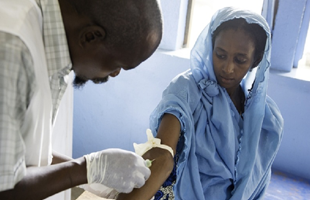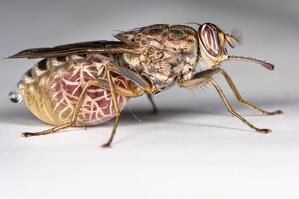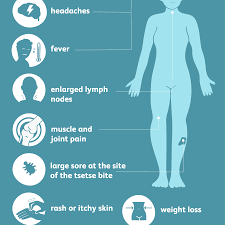
Around 10,000 cases of sleeping sickness are reported each year to the World Health Organization (WHO), though the number could be much more, since it’s believed that many cases go unreported or even un-diagnosed.
Sleeping sickness, while not found in the United States, is found in some rural regions of Sub-Saharan Africa, where it’s considered a serious health problem. If you’re planning on traveling to Africa someday, here’s what you need to know about the disease and what makes it so unique – as well as what you can do to prevent it.
What is sleeping sickness?

The first is known as Trypanosoma brucei gambiense (or West African sleeping sickness), which causes a chronic infection and accounts for 98% of reported cases. The second strain is Trypanosoma brucei rhodesiense (or East African sleeping sickness), which is considered to be less common, and causes an acute infection.
The fly that causes African Sleeping Sickness.Symptoms of the disease come in two stages, with the first including a fever, headache, swollen lymph nodes, joint pain and itchiness. The second stage occurs when the parasites infect the central nervous system by crossing the blood-brain barrier.
Stage Two symptoms include trouble sleeping (such as insomnia throughout the night or sleeping through the day), poor coordination, and even confusion. Unfortunately, without treatment the disease is considered fatal.
DVT risk
Because trouble sleeping (such as extreme fatigue) is a prominent symptom of sleeping sickness, there can be an increased risk of Deep Vein Thrombosis occurring, also known as DVT.
DVT is a condition in which blood clots in the deep veins of the body, generally the legs. When someone is experiencing a sedentary lifestyle, or is sleeping (while sitting or laying down) for unusually long periods of time due to extreme fatigue from sleeping sickness, it’s possible that not enough movement can affect blood flow in the body, thus increasing the risks of developing DVT.
Symptoms of DVT include pain and swelling in the legs and discoloration of the affected area. It’s important to seek medical help if symptoms of DVT arise, as a complication called a pulmonary embolism (when a blood clot travels to the lungs) can occur, and this can be fatal.
Treatment and prevention
When it comes to diagnosing sleeping sickness in a patient, screening for potential infection is often the first step and can involve checking for signs of the disease (such as swollen lymph nodes). The parasite can be found in body fluid (for example, via blood smear).
However, in terms of differentiating which stage of sleeping sickness someone has, a lumbar puncture (or spinal tap) is required. Depending on the stage and form of the disease, treatment consists of anti-parasitics in order to kill the parasite.
How ASS affects the body. According to the WHO, new treatment guidelines were issued in 2019 for Gambiense human African trypanosomiasis, with a total of six drugs used to treat the disease. Some of these drugs are nicknamed “fire in the legs,” however, because of the pain they cause in leg veins. If this is a side effect, a patient should look into varicose vein treatment.
If you happen to find yourself traveling to an area where you’re at risk for contracting sleeping sickness, there are some precautions you can take in order to reduce your risks.
For example, using insect repellent and wearing long-sleeved clothing and pants can help. And, if you can, avoiding areas that are known to have a higher population of the tsetse fly can also be beneficial – such as bushes, where the fly is known to be.
Sleeping sickness is a common disease present in rural areas of Sub-Saharan Africa. While it’s rare for a traveler to get infected, knowing how to prevent the potentially fatal disease can be beneficial if you plan on going to an affected area.
Alaska Sleep Clinic is proud to have one of the Top 5 Sleep Education Websites in the World, with over 5 million people visiting our site in both 2018 and 2019. Make sure you don’t miss any of interesting blogs on sleep. Subscribe below.


Lorem ipsum dolor sit amet, consectetur adipiscing elit. Ut elit tellus, luctus nec ullamcorper mattis, pulvinar dapibus leo.











